Taking care of your swimming pool gets complicated, especially when draining comes into play. Every year, pool owners fall into the same trap, causing damage that could’ve been avoided. You may think that it looks straightforward but trust me, it’s not as harmless as it seems.
It doesn’t matter if your pool is above ground, or an in-ground pool be it vinyl liner, fiberglass, or concrete; draining it carelessly can lead to real headaches.
Each pool type has its own set of risks, and sometimes you really do need the help of a pool professional.
If you want to avoid damaging your pool (and keep your wallet intact by avoiding costly repairs), you need to know when to call for help.
Table of Contents
Dangers You Face When Draining Above Ground Pools
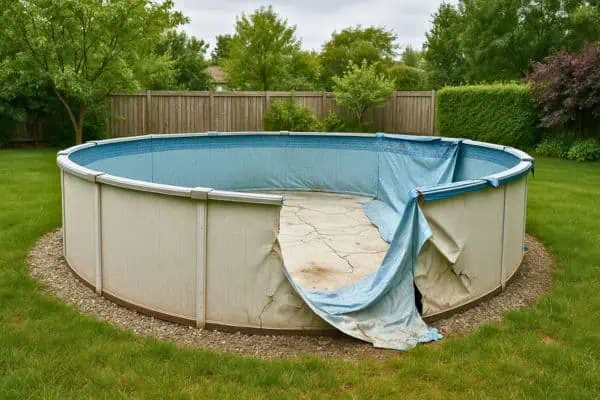
Draining your above ground pool sounds easy, but it’s riskier than you think. These pools are designed to be temporary, so their parts don’t last forever. As the years go by, especially after five years or so, the plastic and liner lose their give.
Drain the pool, and the liner might stretch, bulge, or tear because it’s just not as flexible anymore. That can mean leaks or damage that force you to replace the liner—or even the whole pool.
Problems you might run into:
- Liner rips because it can’t stretch further
- Walls buckle or bend without water support
- Replacement costs for liners or the whole pool
| Problem | What Can Happen |
|---|---|
| Liner shrinking | Tears or rips |
| Old liner | Stretches in wrong spots |
| Weak walls | Bulging or collapse |
If the liner breaks, patching it isn’t as simple as when it was new. Draining and refilling an older above ground pool is a gamble. I would avoid it unless you absolutely have to.
Risks of Emptying a Vinyl Liner Pool
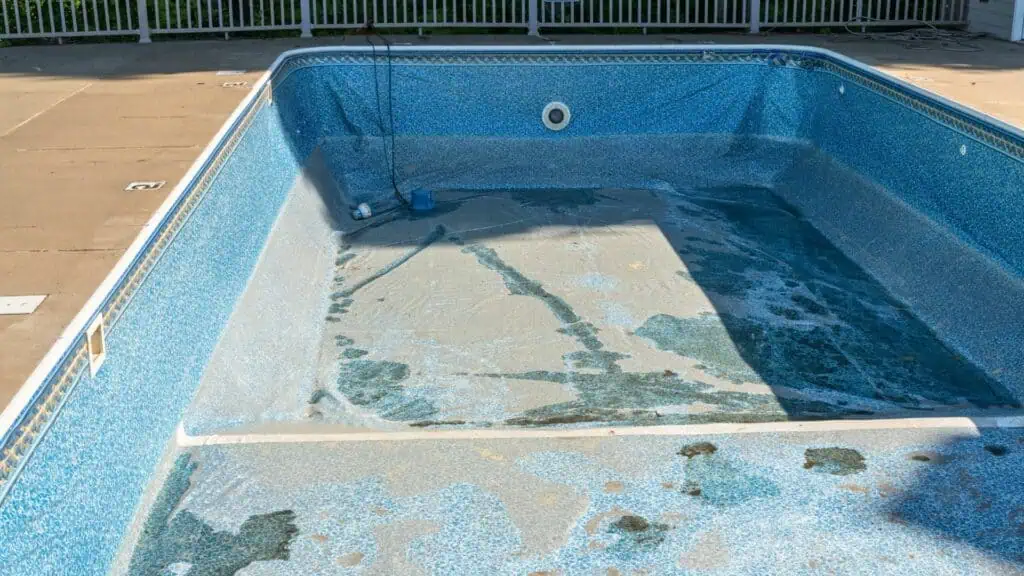
Liner Problems and Tearing
When you drain a vinyl liner pool the liner can slip out of place. Only water and a vacuum keep it where it belongs. Over the years, sun and chemicals make the liner lose its stretch. By year seven, it can get brittle.
Take out all the water and you might rip the liner near the edges, steps, or jets. If it tears, you’ll probably need a new one, and that’s not cheap.
Quick List of Risks:
- Liner can shift or wrinkle
- Edges might pull away and tear
- Rips could mean replacing the whole liner
Tips for Safe Water Removal
Never fully empty an inground vinyl liner pool unless you’re using vacuums on the liner. If you have to then at least drain the pool partially, leaving at least 6–12 inches of water in the pool covering the shallow end. That little bit helps keep the liner in place.
| Water Level (Shallow End) | Risk Level |
|---|---|
| Full Drain | Very high risk |
| 6–12 inches left | Lower risk |
Important:
- Use vacuums if you must drain everything
- Don’t let the liner sit empty, or it’ll shift and tear
Reasons to Keep Water in Fiberglass Pools
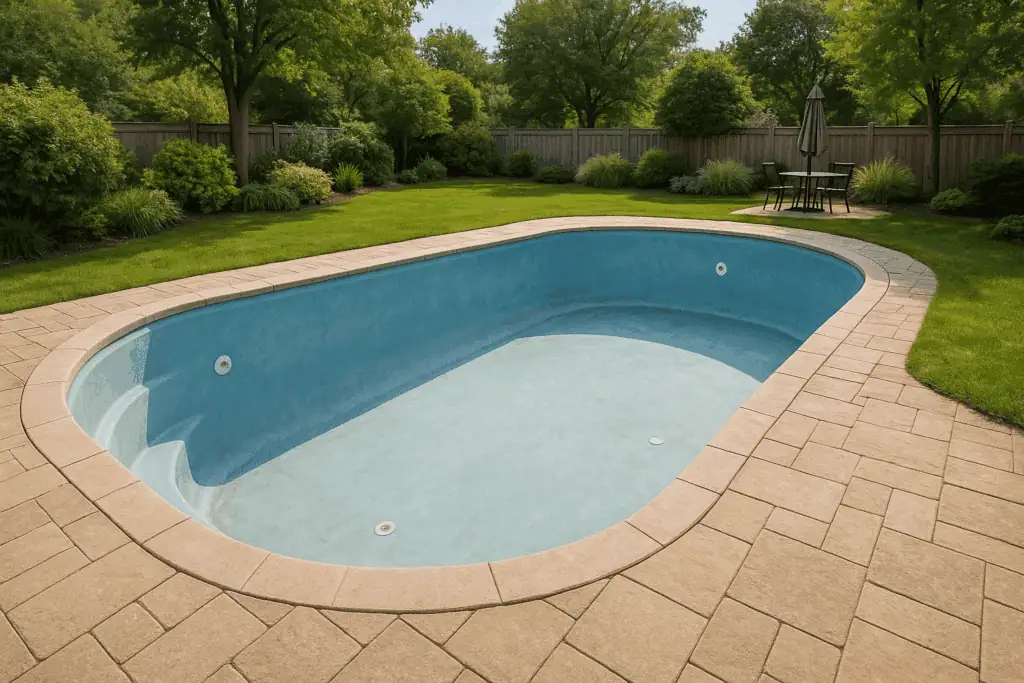
Problems with Losing Water Pressure
When you drain a fiberglass pool, you lose the weight that keeps it pressed down in the ground. Without water, groundwater outside the pool can push the whole thing up.
- The pool’s just a giant shell, it’s not heavy enough alone.
- If the ground’s wet or the water table’s high, pressure builds under the pool.
- Bulges, cracks, or even a pool that pops out can happen.
Tip: Keeping your pool full keeps it safer from these problems.
Dangers to the Pool’s Structure
Fiberglass pools can’t stand up to ground pressure without water inside.
- Draining can make the sides and bottom bend or crack.
- These damages are usually permanent—you might need a new pool.
- If your pool pops out of the ground, repairs are outrageously expensive.
| Risk | What Might Happen |
|---|---|
| Pool empties | Pool may rise out of ground |
| High ground water | Cracks and bowing on pool walls |
| Not enough support | Permanent, expensive damage |
Important: Only let a trained pool expert drain your fiberglass pool, and only if it’s really necessary. Most of the time, you shouldn’t ever let all the water out yourself.
Dangers of Draining Concrete Swimming Pools
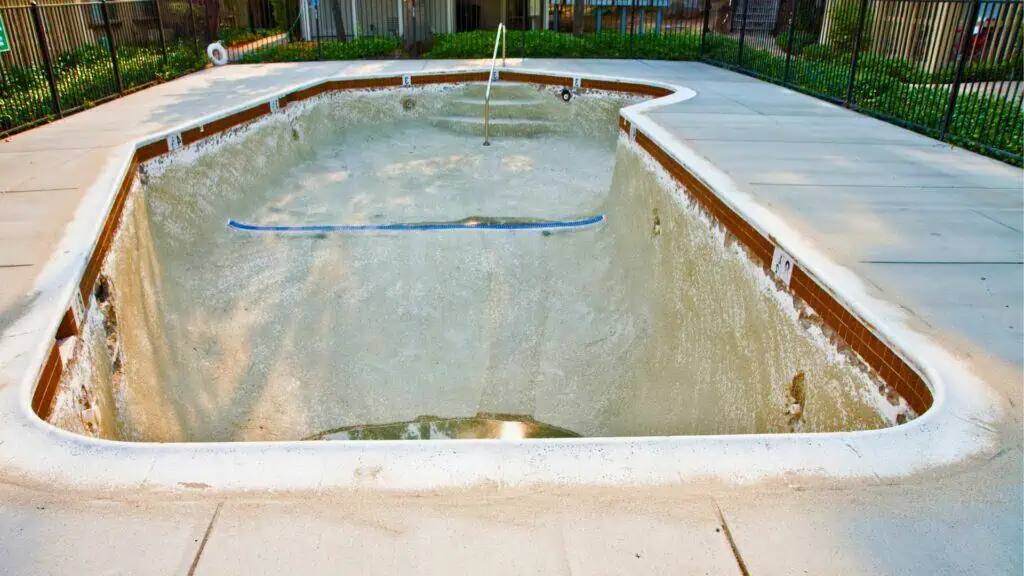
Risk of Lifting and Cracking
Drain a concrete pool and you take away the weight that keeps it anchored. Without water pressing down, the shell can lift or pop out, especially if the ground underneath is wet. That kind of upward force can crack or break the whole pool.
What can happen:
- The pool shell might lift out of the ground.
- Cracks can show up in the concrete.
- Repairs? You will need a pool contractor and the repairs will usually be very expensive.
Handling High Groundwater Concerns
If you live somewhere the ground stays soggy or you’re close to lakes, rivers, or marshy spots, draining a concrete pool gets risky. High groundwater builds up under the pool and pushes hard against it due to hydrostatic pressure.
The best bet? Wait for the hottest, driest stretch of the year to lower the odds of trouble.
Safe practices:
- Drain only during dry weather.
- If you’re unsure about what’s under your pool, don’t risk draining it.
- Some pools have tubes or drains for groundwater, but those don’t make it foolproof.
Tips:
- Always check ground conditions first.
- If you’re not sure what to do about groundwater, just call a pro wh will be familair with the local groundwater conditions.
- One mistake here could wreck your pool for good.
Valid Reasons to Drain a Pool
There are some valid reasons for draining a pool, in which case you will just have to bite the bullet and do it, or get a pool professional to do it. These include:
| Valid Reason | Why Draining Is Necessary |
|---|---|
| Major Repairs | Resurfacing, liner replacement, or fixing structural issues can’t be done with water present. |
| Extremely Poor Water Quality | Water that’s too cloudy, algae-filled, or contaminated may be safer to replace than to treat. |
| High TDS Levels | Excess Total Dissolved Solids (TDS) reduce chemical effectiveness; draining helps reset water. |
| System Conversion | Switching between chlorine and saltwater systems may require a full or partial drain. |
| Winterization Needs | In some cold climates, partial draining helps prevent freeze damage (mostly older pools). |
Environmental and Legal Risks
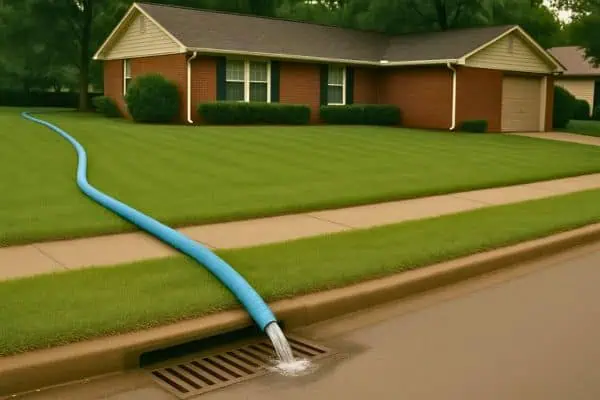
Draining your pool doesn’t just affect your backyard as it can have serious consequences for the environment and your wallet.
Improper Disposal Can Harm Local Water Systems
Pool water contains chemicals like chlorine, algaecide, stabilizers, and even metals. If drained directly onto your lawn, down the street, or into a storm drain, this water can flow untreated into nearby rivers, lakes, and wetlands.
Storm drains don’t lead to a treatment plant as they often discharge directly into natural water sources. Dumping chlorinated water into these systems can kill fish, disrupt aquatic life, and damage fragile ecosystems. Even “neutral” pool water may still contain residues that upset the balance of natural waterways.
You Could Be Breaking the Law
Local governments often regulate how pool water should be drained, and violating these rules can lead to legal trouble. In some municipalities, it’s illegal to drain pool water into the street or a storm drain without a permit or pre-treatment.
Violating these rules can lead to fines or citations. Fines can range from a few hundred to several thousand dollars depending on your location and the extent of the violation.
You may be required to:
- Let chlorine levels drop to near zero
- Adjust the pH to a neutral level
- Use designated sewer cleanouts for drainage
Drought Restrictions May Apply
In regions experiencing water shortages, such as California, Arizona, or parts of Spain, draining a pool could be restricted or even banned during drought emergencies.
Water is a scarce resource, and emptying a pool can waste thousands of gallons unnecessarily. Local water boards may enforce penalties, and repeated violations can lead to increased scrutiny or even limits on future water use.
Even if you’re planning to refill the pool, using that much water during restrictions could trigger higher usage charges or public backlash.
The Bottom Line
If you have any doubts at all then the best course of action is to contact a local pool professional. It may cost you more but it may save thousands in the long run.
FAQs
How long can a pool stay empty without damage?
In-ground pools risk cracking or popping within days due to hydrostatic pressure, especially in high water tables. Vinyl liners may wrinkle in 1–2 weeks. Above-ground pools can last weeks but risk liner or frame damage. Refill promptly and consult a pro.
What are the signs of hydrostatic pressure issues?
Cracks in the pool shell, bulging or lifting, wet soil around the pool, water seepage in an empty pool, or creaking noises. Stop draining, partially refill, and call a professional if noticed.
Can I drain an above-ground pool safely?
Yes, it’s safer than in-ground pools, but vinyl liners may shrink or tear, and frames can weaken if empty for weeks. Drain partially, use a pump, follow local regulations, and refill quickly.
What are the environmental risks of draining a pool?
Chlorinated water can harm plants, soil, or waterways and may lead to fines. Improper drainage causes flooding or erosion. Dechlorinate water and direct it to approved systems per local laws.
What happens if I leave my pool empty during winter?
Empty pools risk cracking or shifting from freeze-thaw cycles or groundwater pressure, especially in-ground ones. Vinyl liners may dry out or tear. Partially fill to stabilize, cover securely, and consult a professional to prevent costly damage.
Can draining a pool affect my home’s foundation?
Yes, draining can cause soil shifts from hydrostatic pressure, potentially cracking nearby foundations or slabs. In-ground pools are most at risk. Monitor soil conditions, drain partially if needed, and hire a structural engineer to assess risks.

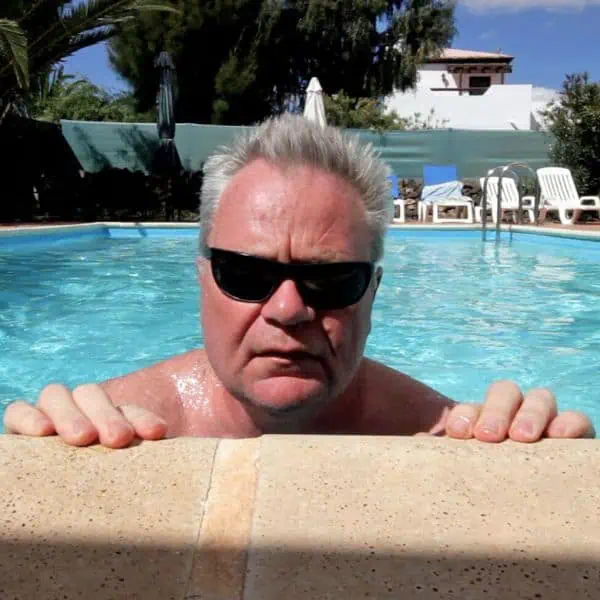



Leave a Reply